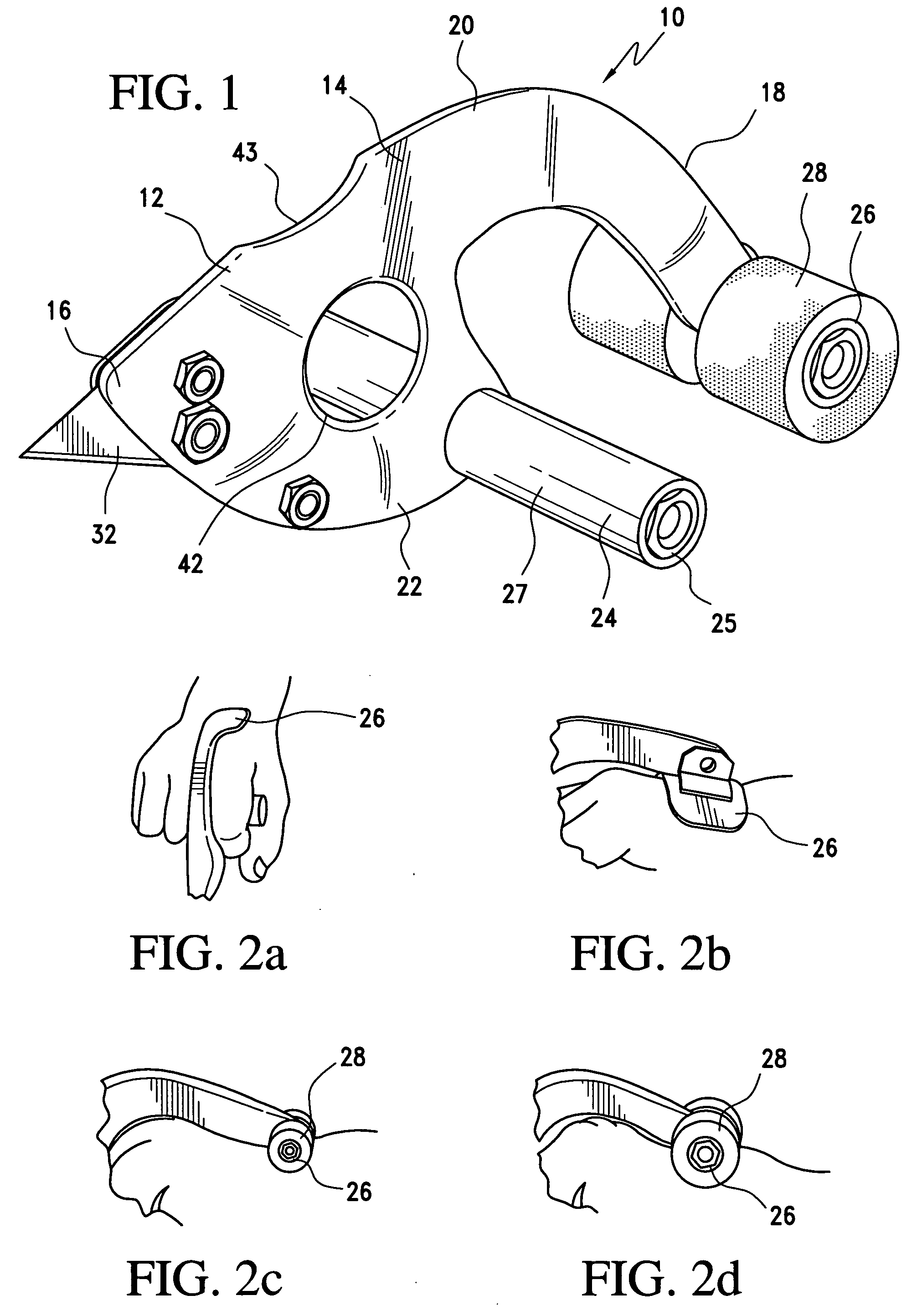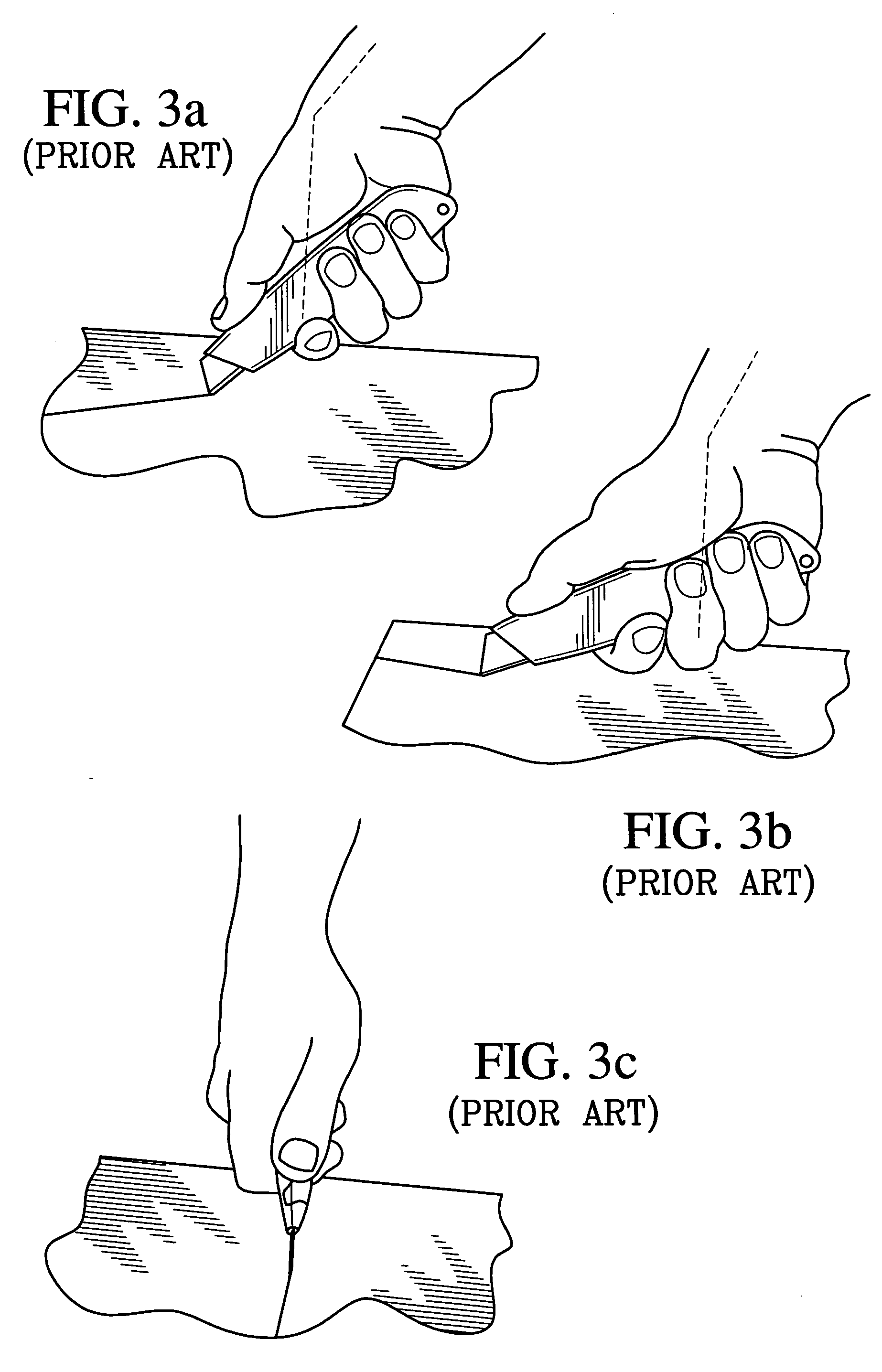Ergonomic handle for a utility knife
a handle and utility knife technology, applied in the field of ergonomic handles, can solve the problems of users that must cut regularly, the blade cannot touch the cutting plane, and the muscles used for ulnar deviation are disproportionately stressed, so as to achieve the effect of avoiding inflammation and pain and requiring more for
- Summary
- Abstract
- Description
- Claims
- Application Information
AI Technical Summary
Benefits of technology
Problems solved by technology
Method used
Image
Examples
Embodiment Construction
[0027] Referring to FIG. 1, shown is a utility knife 10.comprising a handle 12 of the present invention. The handle 12 includes a body 14. The handle body 14 comprises a first end 16, a second end 18, a top portion 20 and a bottom portion 22. The body 14 may be comprised of a variety of materials, including but not limited to non-flexible plastic including high strength molded plastic; wood; and metal including galvanized metal or a lightweight alloy such as aluminum. Preferably, the body is comprised of molded plastic. All or portions of the handle body 14 may be hollow in order to decrease the weight of the handle 12 and utility knife 10.
[0028] The handle 12 further includes a grip 24 connected to the body 14 and preferably located substantially perpendicular to the body. The grip 24 forms what is commonly known as a T-grip with the body 14. The grip 24 may be any shape which enables a user to grasp and utilize the handle 12 while maintaining the user's wrist in a neutral positio...
PUM
 Login to View More
Login to View More Abstract
Description
Claims
Application Information
 Login to View More
Login to View More - R&D
- Intellectual Property
- Life Sciences
- Materials
- Tech Scout
- Unparalleled Data Quality
- Higher Quality Content
- 60% Fewer Hallucinations
Browse by: Latest US Patents, China's latest patents, Technical Efficacy Thesaurus, Application Domain, Technology Topic, Popular Technical Reports.
© 2025 PatSnap. All rights reserved.Legal|Privacy policy|Modern Slavery Act Transparency Statement|Sitemap|About US| Contact US: help@patsnap.com



